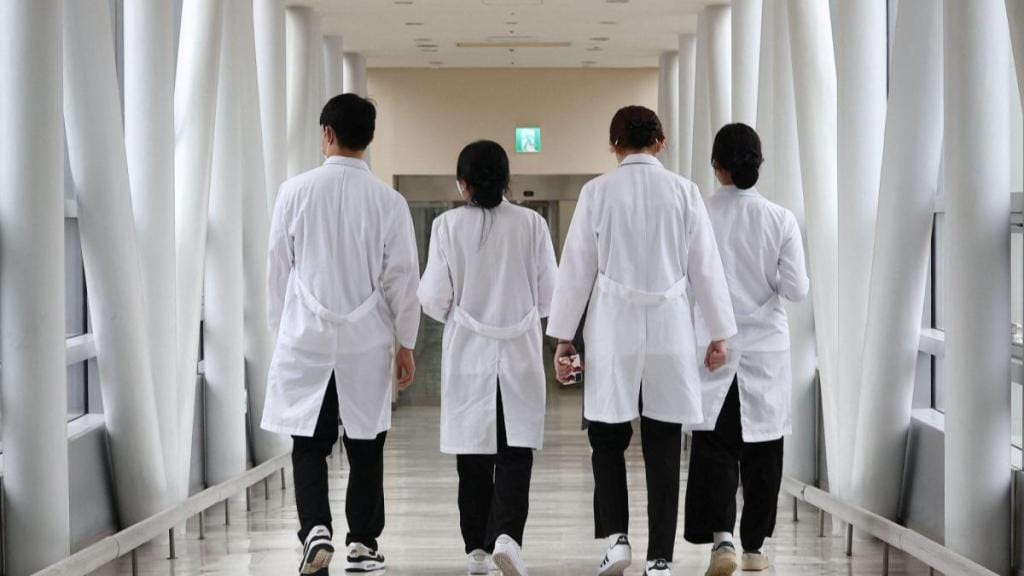By Siddhartha Bhattacharya & Brajesh Singh,
India’s doctor-to-population ratio has improved to 0.9:1,000, nearing the World Health Organization’s recommended 1:1,000. But around one-third of the population is short of doctors, and we have only 0.2 specialists per 1,000 people. This shortage is particularly acute in community health centres, crucial in rural areas. Addressing issues in education and skill training such as infrastructure gap, poorly leveraged private sector, and lack of digital technology usage are critical. There are additional challenges in nursing including low compensation, lack of career pathways, and high attrition rates.
While the government has announced new medical colleges and All India Institutes of Medical Sciences across the country, upgrading existing colleges and using hospital infrastructure are practical options. A Centre for Social and Economic Progress study shows that the number of medical colleges and seats have increased over the past decade mainly due to the growth of government medical colleges and relaxed norms for setting up new ones. Yet, 57% districts do not have a medical college. In 2022, 17.6 lakh candidates took the National Eligibility-cum-Entrance Test, with 56.3% qualifying, but only 12% got seats in medical colleges, according to the National Testing Agency.
Between 2015-16 and 2023-24, postgraduate seats doubled, most of them in government colleges. Private colleges tend to favour Diplomate of National Board (DNB) seats. Introduced by the Centre in 1975 to address shortage of doctors and teaching faculty, the DNB course emphasises practical training. DNB makes up 19.7% of the postgraduate seats, with 67% offered by private institutions.
Although private colleges have more undergraduate seats than government ones, they have the potential to help bridge the demand-supply gap for specialists. This is where DNB seats can play a crucial role. A study by NATHEALTH shows that DNB has an additional demand potential of 7,500 seats in private hospitals with over 200 beds. There are around 3.7 lakh beds in private hospitals with 200-plus beds. But the total count can go up to 7.5 lakh if hospitals with 100-200 beds are included. The private sector has an allocation of 9,000 DNB seats, but that is not fully utilised. If hospitals with over 100 beds are considered, the DNB seats could go up to 35,000 (with an error margin of 10%).
While there is a big opportunity to grow DNB seat availability, certain barriers need to be overcome. Among them are the distribution of approved DNB seats and penetration across specialties. The National Board of Examinations (NBE), which awards the DNB postgraduate degree, needs to tweak guidelines, and reduce cumbersome processes for wider penetration.
Private hospitals also face challenges in meeting infrastructural compliance (additional laboratory, library, faculty stipends) while increasing DNB seats. Given the shortage of specialists, it is crucial to re-evaluate the demand based on patient influx and prioritise optimal utilisation of resources.
Perception is another hurdle that needs to be changed to make DNB more widely acceptable. Incentivising the intake of DNB, and flexibility on additional infrastructure for incremental seats will boost private sector participation.
To increase the number of specialists, leveraging the DNB programme is vital. Ensuring seats are filled with candidates matching demand with specialisation is key. The NBE should create a strong marketing arm to promote the DNB programme, counsel students, and build support among them. Addressing student concerns about infrequent assessments or delayed re-examinations is also necessary.
The annual tuition fee for DNB could be raised by 50-75% and all outstanding dues need to be settled within 30 days. Another step could be to ensure a minimum 33% stipend cost offset for each new DNB seat compared to the previous year’s baseline. The additional funds generated can be used to strengthen academic infrastructure, increase faculty, etc. It will also be better for private hospitals to adopt the practice of public ones that require candidates to sign bonds. A reasonable percentage of capacity can be mandated to ensure all hospitals consider DNB-certified specialists as part- or full-time consultants. The medical education policy could be changed to allow part-time/contractual doctors to fulfil part of the staffing criteria and enable standalone centres to offer DNB programmes. A hub-and-spoke model enabling small district hospitals to offer DNB programmes with large private hospitals could also help produce more specialists.
Designating hospital chains exceeding a specified minimum DNB seat threshold as centres of excellence would be a huge boost. Allowing foreign direct investment (FDI) in higher medical education will enhance resources, expand the supply pool, improve technical proficiency, introduce modern simulators, refine pedagogy, strengthen faculties, and foster global partnerships. Besides, exploring alternative financing options such as loans and interest subvention schemes is necessary to ease seat expansion.
Another way of stimulating the DNB programme is to set up innovation and simulation centres along with start-up hubs, involving faculty to enhance the learning experience. The government should facilitate the seamless mobility of faculty between medical colleges and hospitals offering DNB programmes, both in the public and private sectors. If implemented, these measures could give India’s healthcare system a much-needed shot in the arm.
Author Siddhartha Bhattacharya is secretary general, NATHEALTH and Brajesh Singh is president, Arthur D Little India. Views expressed are personal.


